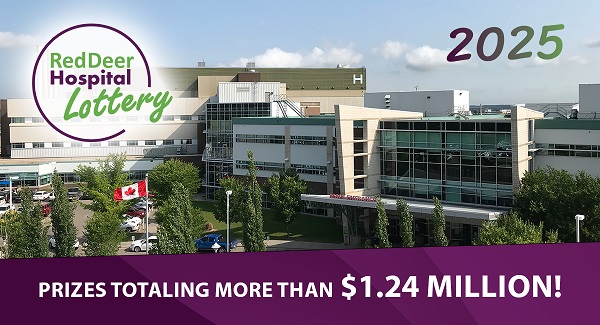Community
Alberta Electoral Boundaries Commission cuts rural representation for more urban representation.

The Alberta Electoral Boundaries Commission submitted it’s final report on October 19 2017 to the legislature.
The only change Red Deer will see is the unification of Deer Park into Red Deer South. But that is not the whole story.
It was not a unanimous report as there was some disagreement among the members. The commission recommends keeping the number of ridings at 87. So?
Since the 2010 Electoral Boundaries Commission reported, Alberta has experienced a net increase in population of over 14%, by far the fastest rate of growth of any Canadian province. However, that increase in population has not been uniform in all areas of the province.
Red Deer maintained and surpassed the growth rate of the province until 2015. Between 2010 and 2015 the province grew 11.2% while Red Deer grew 11.9% but in 2016 Red Deer declined to 10.8% from 2010, while the province continued on to hit 14%.
The report talks about the migration from rural areas to the urban centres but Red Deer is seeing the opposite trend. Red Deer is declining in population while smaller communities like Blackfalds, Penhold and Sylvan Lake are growing. Red Deer claims to be Alberta’s third largest city but is not keeping up with other cities in Alberta. I digress.
To accommodate growth patterns 3 urban ridings were created while 3 rural ridings were cut.
One member of the commission, Gwen Day, did not support the cut in rural ridings. She suggested the government should have allowed the commission to recommend an increase in the total number of constituencies instead of keeping it at 87. “I don’t think it is the best and wisest way to handle this situation,” she said.
Nathan Cooper, interim leader of the United Conservative Party, said the recommended changes would make it more difficult for lawmakers from rural areas to represent their constituents.
“The commission recommends creating a total of three new constituencies in Calgary, Edmonton and the Airdrie-Cochrane area. It also says three rural ridings should be cut by consolidating some.
• Creation of a new electoral division to the immediate north and west of Calgary, to be called Airdrie-Cochrane,
to account for population growth at a rate above that of the province as a whole in both of Airdrie and Cochrane.
• Creation of an additional electoral division in the City of Calgary, to be called Calgary-North East, to account
for that city’s population growth at a rate above that of the province as a whole.
• Creation of an additional electoral division in the City of Edmonton, to be called Edmonton-South, to account
for that city’s population growth at a rate above that of the province as a whole.
While eliminating 3 rural ridings by;
• Consolidation of four electoral divisions into three in the central northeast area of the province (north and east
of Edmonton) to account for the population in those areas having grown at a rate below that of the province as a
whole; those existing four electoral divisions are Lac La Biche-St. Paul-Two Hills, Athabasca-Sturgeon-Redwater,
Fort Saskatchewan-Vegreville and Bonnyville-Cold Lake.
• Consolidation of five electoral divisions into four in the central west area of the province (north of Red Deer
and west of Edmonton) to account for the population in those areas having grown at a rate below that of the
province as a whole; those existing five electoral divisions are Rimbey-Rocky Mountain House-Sundre, West
Yellowhead, Drayton Valley-Devon, Whitecourt-Ste. Anne and Stony Plain.
• Consolidation of seven electoral divisions into six in the eastern side of the province (south of Calgary and east
of Highway 2) to account for the population in those areas having grown at a rate below that of the province as
a whole; those existing seven electoral divisions are Battle River-Wainwright, Drumheller-Stettler, Strathmore-
Brooks, Little Bow, Cardston-Taber-Warner, Cypress-Medicine Hat and Vermilion-Lloydminster.
The election will be in 2019 and looks like we will have fewer rural ridings which seem to be of more conservative in voting trends and we have more urban ridings which seem to be of more progressive in voting trends.
Do you think our more progressive government will accept and implement this report? Let me guess……
Community
Support local healthcare while winning amazing prizes!

|
|
|
|
|
|
Community
SPARC Caring Adult Nominations now open!

Check out this powerful video, “Be a Mr. Jensen,” shared by Andy Jacks. It highlights the impact of seeing youth as solutions, not problems. Mr. Jensen’s patience and focus on strengths gave this child hope and success.
👉 Be a Mr. Jensen: https://buff.ly/8Z9dOxf
Do you know a Mr. Jensen? Nominate a caring adult in your child’s life who embodies the spirit of Mr. Jensen. Whether it’s a coach, teacher, mentor, or someone special, share how they contribute to youth development. 👉 Nominate Here: https://buff.ly/tJsuJej
Nominate someone who makes a positive impact in the live s of children and youth. Every child has a gift – let’s celebrate the caring adults who help them shine! SPARC Red Deer will recognize the first 50 nominees. 💖🎉 #CaringAdults #BeAMrJensen #SeePotentialNotProblems #SPARCRedDeer
s of children and youth. Every child has a gift – let’s celebrate the caring adults who help them shine! SPARC Red Deer will recognize the first 50 nominees. 💖🎉 #CaringAdults #BeAMrJensen #SeePotentialNotProblems #SPARCRedDeer
-

 2025 Federal Election1 day ago
2025 Federal Election1 day agoThe Federal Brief That Should Sink Carney
-

 2025 Federal Election1 day ago
2025 Federal Election1 day agoHow Canada’s Mainstream Media Lost the Public Trust
-

 2025 Federal Election1 day ago
2025 Federal Election1 day agoOttawa Confirms China interfering with 2025 federal election: Beijing Seeks to Block Joe Tay’s Election
-

 John Stossel1 day ago
John Stossel1 day agoClimate Change Myths Part 2: Wildfires, Drought, Rising Sea Level, and Coral Reefs
-

 2025 Federal Election1 day ago
2025 Federal Election1 day agoReal Homes vs. Modular Shoeboxes: The Housing Battle Between Poilievre and Carney
-

 Media12 hours ago
Media12 hours agoCBC retracts false claims about residential schools after accusing Rebel News of ‘misinformation’
-

 COVID-191 day ago
COVID-191 day agoNearly Half of “COVID-19 Deaths” Were Not Due to COVID-19 – Scientific Reports Journal
-

 Bjorn Lomborg11 hours ago
Bjorn Lomborg11 hours agoNet zero’s cost-benefit ratio is CRAZY high




